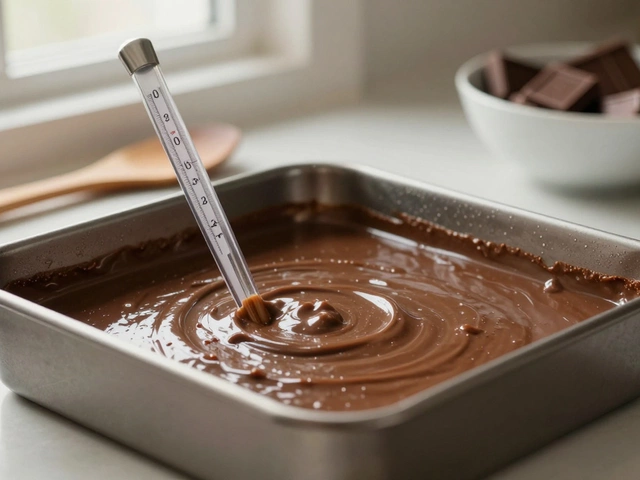Think about that slice of lasagna melting on your plate, or a fork swirling up spaghetti in a loud, cheerful family lunch in São Paulo. Italian food is everywhere in Brazil, and it’s not just pizza and pasta. This story reads like a wild dinner party—full of bold flavors, surprising favorites, and decades of migration, hope, and hard work. Ever wonder what exactly Italians brought to Brazilian tables? It’s way more than just tomatoes and garlic. Grab your fork, and let’s dig into what Italian immigrants actually introduced to daily life and special occasions across Brazil.
Pasta, Polenta, and Beyond: The Real Roots of Italian-Brazilian Cuisine
Italians didn’t just bring spaghetti—there’s a whole family tree of noodles, and each region of Italy had its favorites. Imagine arriving in São Paulo or the coffee-rich hills of Espírito Santo, clutching traditional recipes for tagliatelle, gnocchi, lasagna, and ravioli, trying to make sense of the local ingredients. Wheat was expensive in 19th-century Brazil, so Italian immigrants often swapped it out for cornmeal and cassava flour, immediately transforming their beloved dishes. That’s how polenta took off, especially in the south. Served soft, thick, or even fried, polenta shows up on Sunday tables from Rio Grande do Sul to Santa Catarina. Italians in Brazil also made their gnocchi with sweet potatoes or cassava when regular potatoes weren’t around. What’s wild: many Brazilian kids eat gnocchi on the 29th of each month for luck—a tradition with roots in both Italian superstition and tough immigrant days, when stretching a bag of flour meant the whole family could eat.
But it doesn't stop there. Lasagna’s famous layers—ragu, béchamel, pasta—took on a Brazilian twist, often stuffed with extra cheese, even ham. Lasagna is actually a party essential at birthdays and holiday feasts, which you probably wouldn’t see as often in Italy itself. Ravioli and tortellini were adapted with local stuffings, like ricotta blended with cachaça or even dried beef (carne seca) in more rural regions. Even today, big brands like Barilla and Adria owe a chunk of their success to this immigrant heritage, blending Italian classics with Brazilian tastes.
Pasta became a symbol of affordable comfort food and community. And because meat was pricey on most tables, simple sauces—garlic, tomatoes, olive oil—turned into a daily staple, growing into flavors that any Brazilian recognizes today. If you’re looking for a quirky fact: green gnocchi, colored with local spinach or kale, is common at celebrations. Polenta fries are a staple at botecos in São Paulo, and big Italian-Brazilian families still argue over whose nona makes the best.
Breads, Pizza, and Street Snacks: Iconic Italian Dishes Brazilians Made Their Own
Brazil has a fever for bread, and Italians poured more gasoline on that fire. They brought recipes for ciabatta, focaccia, and filão—a crusty, long loaf that slowly blended into the Brazilian beloved pão francês. Try going to any morning bakery in Rio and not grabbing one. You can thank Italian bakers for this light, crisp bread, even if its name is ‘French bread’.
Now, let’s talk pizza. São Paulo alone boasts more pizzerias than Rome. But Brazilian pizza is a culture of its own. Italian immigrants started baking pizzas in simple wood-fired ovens in Bixiga, São Paulo, as far back as the early 20th century. The pizza became a blank canvas—Brazilians top it with everything from hearts of palm and catupiry cheese to guava paste.
What’s cool: the classic Neapolitan thin crust barely survived in Brazil. Instead, locals thickened the dough, and slices are usually loaded with cheese—sometimes so much it almost melts off. The most iconic local touch is pizza de calabresa (with spicy sausage) and pizza Portuguesa (ham, egg, peas, onions). Even dessert pizzas took off, with chocolate sprinkles and strawberries taking center stage.
Italian immigrants also popularized snacks you can eat with one hand on the street, like panzerotti—pockets of dough stuffed with cheese or meat, deep fried. It’s like the Italian cousin to the Brazilian pastel. There's also fogazza—a fried fritter that looks like a golden pillow and shows up at São Paulo street markets during the Festival de Nossa Senhora Achiropita. Oh, and don’t forget about grissini (breadsticks) that pair with drinks at happy hour, or taralli, those crunchy little rings perfect with your afternoon coffee.

From Cheese and Cured Meats to Dessert: Hidden Italian Staples in Brazilian Daily Life
Head to any Brazilian feira and scan the cheese section—many of the familiar flavors have an Italian link. Italians introduced cheeses like mozzarella and provolone to Brazilian cheesemaking, with local tweaks. Back in the day, Italian immigrants couldn’t find buffalo milk, so they learned to make mozzarella with cow’s milk, creating a softer, milkier bite. The cheese blends took off: just look at all that gooey cheese stretching atop pizzas or hiding inside pão de queijo (which originally was not Italian, but later got its own Italian-influenced filling versions).
Salami and mortadella also owe their spot on Brazil’s sandwich menus to Italians. Walk through São Paulo’s Municipal Market and watch somebody order a mortadella sandwich. The layers of meat are not subtle—this thing is huge. Italian sausage, or 'linguiça calabresa', became a spicy go-to for pizza, bean stews, and grills. Those same Italian butchers set up shops across Santa Catarina, Paraná, and Espírito Santo, making charcuterie with local spices and pork.
Now, let’s indulge the sweet tooth. Cannoli became a party treat at Italian festivals (often filled with doce de leite, another Brazilian twist). Zeppole and sfogliatelle, along with homemade amaretti and biscotti cookies, sneak into coffee shops during holidays. Ever had a slice of Italian panettone at Christmas? It’s so Brazilian now, that supermarkets start selling it as early as September, in every size and flavor—classic, chocolate chip, and fruit cocktail. Italian gelato started out in the Bixiga neighborhood, served by street vendors who wheeled carts around in the 1950s, scooping creamy flavors into coconut or guava shells. Dessert is where traditions blend like nowhere else.
How the Italian Table Changed Brazilian Food Culture: Surprising Facts and Tips
The Italian table doesn’t just leave food on your plate; it brings a whole lifestyle. From the famous Sunday family lunch (almoço de domingo) to traditions around saints’ days and neighborhood festas, food is an excuse to gather everyone around and celebrate. You can spot this especially in São Paulo and southern states like Rio Grande do Sul, Paraná, and Santa Catarina, where generations-old Italian communities throw food festivals larger than some cities.
Did you know that São Paulo alone is home to at least 6,000 Italian restaurants? That’s more than in Milan, and that’s not counting the endless little trattorias, delis, and bakeries scattered across Brazil’s cities and towns. About 30 million Brazilians claim some Italian descent, making this the largest Italian community outside Italy, which explains a lot about how deep-rooted Italian cuisine has become in Brazil.
Italian dishes have also changed Brazilian eating habits. In early immigrant days, pasta was a rare treat—today, dried spaghetti is always stocked in most Brazilian kitchens. Polenta isn’t just family fare anymore—you can find it on chic restaurant menus, sometimes topped with octopus or grilled veggies. And Brazilian home cooks love sharing tips online for their favorite twist on lasagna (throw in heart of palm or carrots for extra color).
If you want to identify a genuine Italian touch in Brazilian food, look for these clues:
- Pasta sauces using simple, fresh ingredients. Less is more—tomato, basil, garlic, olive oil.
- Cheese always melted, never greasy, and usually paired with fresh bread.
- Desserts with nuts, honey, or ricotta. Plus, panettone in every supermarket around the holidays.
- Festival street snacks—fried, stuffed, or both. Italian flavors show up even in things that locals now call their own.
| Italian Classic | Brazilian Twist | Where to Find It |
|---|---|---|
| Lasagna | Loaded with ham, cheese, sometimes hearts of palm | Sunday family feasts, party buffets |
| Gnocco/Polenta | Fried polenta, gnocchi with cassava | Restaurants, street food stalls |
| Pizza | Thick crust, lots of cheese, unique Brazilian toppings | Pizzerias nationwide |
| Mortadella | Epic sandwiches with loads of meat and cheese | Municipal Market, deli counters |
| Panettone | Fruit, chocolate chip, doce de leite filled versions | Bakeries, supermarkets |
| Cannoli/Sfogliatelle | Filled with doce de leite, guava, or chocolate | Italian festivals, bakeries |
Eating ‘Italian’ in Brazil is never just about following a recipe. It’s about energy, people, and invention—stretching old ingredients into new traditions, hanging out for hours at the table, and always making room for one more. Want a tip? If you walk past a Brazilian home and hear laughter before you smell dinner, chances are, someone’s nona is serving her secret sauce and reminding everyone that food is love. So next time you grab a slice of pizza Paulistana or dip into creamy polenta at a street festival, you know it’s a meal that traveled halfway around the world to land right on your plate.





